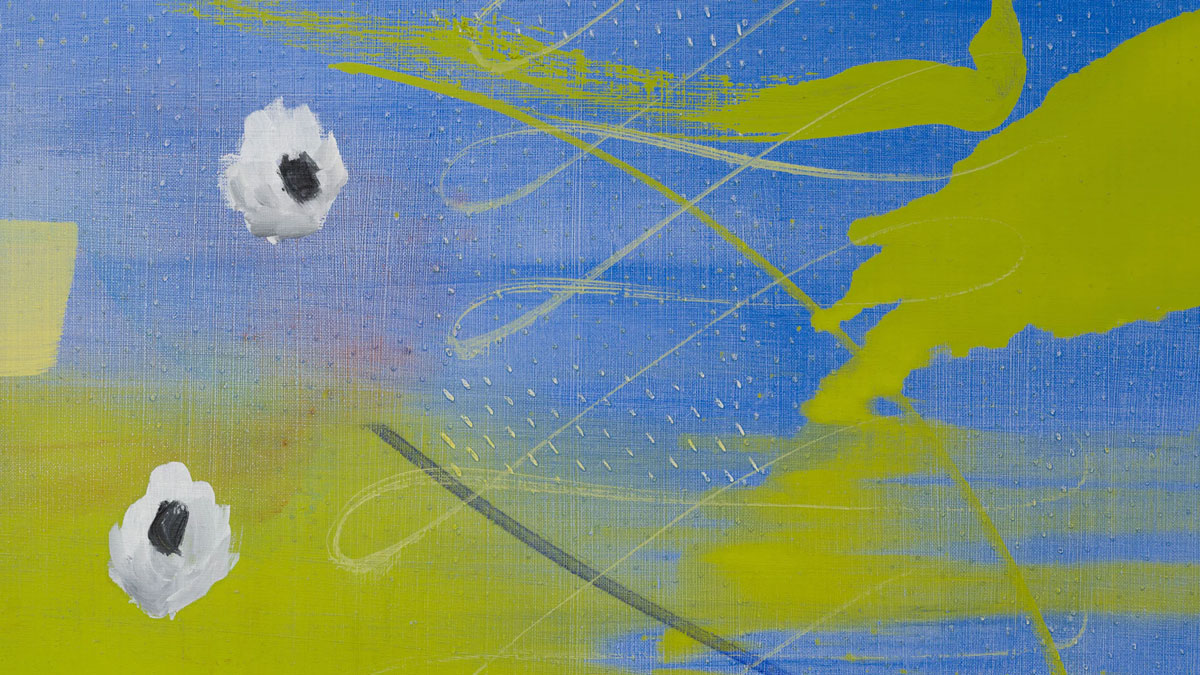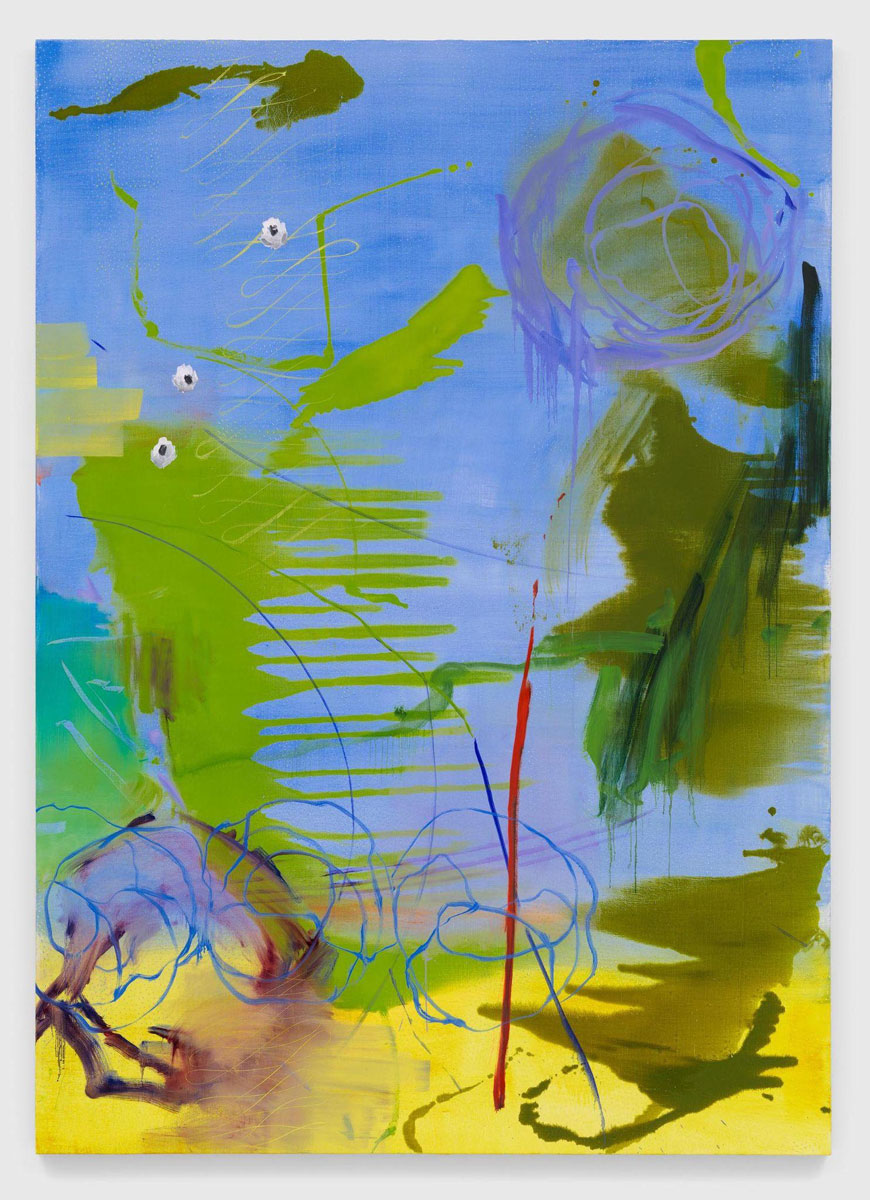ART CITIES: N.York-Emma McIntyre
 Some of Emma McIntyre’s works draw you into an illusory space; others are formalist-flat. All her large paintings begin on the floor: usually she’ll start with an oil ground and pour diluted oil paint onto it, or washed-out ink or acrylic, or an oxidization solution if she’s making a rust work. Her processes are experimental and instinctive, her results varied and highly unpredictable. These are paintings of chaos and chance.
Some of Emma McIntyre’s works draw you into an illusory space; others are formalist-flat. All her large paintings begin on the floor: usually she’ll start with an oil ground and pour diluted oil paint onto it, or washed-out ink or acrylic, or an oxidization solution if she’s making a rust work. Her processes are experimental and instinctive, her results varied and highly unpredictable. These are paintings of chaos and chance.
By Dimitris Lempesis
Photo: David Zwirner Archvive
Emma McIntyre presents “An echo, a stain”, her first solo exhibition in New York. Her protean canvases evolve alchemically, transformed both by the artist’s interventions and the unbridled organic interactions of her chosen materials: oil and unconventional substances like oxidized iron. She begins by pouring paint from above, letting her colors pool, splash, and stretch across her substrate. The artist then reorients her supports and, in a process that is at once intuitive and revelatory, applies additional layers of paint, further modifying her surfaces using brushes, rags, or her own fingers. McIntyre pairs her extemporaneous modes of creation with a repertoire of motifs and compositional strategies gleaned from a close study of art history; she looks to the canvases of a diverse set of artists, including Piero della Francesca, Jean-Antoine Watteau, Pierre Bonnard, Cy Twombly, Joan Mitchell, and Sigmar Polke. Atmospheric yet grounded, McIntyre’s compositions hover between spontaneity and deliberate action; effervescent at the surface, they exist at the edge of perception, forming and reforming before our eyes. Prompted by her materials and guided by an index of mark-making, in the works on view McIntyre exposes the endless potential of painting. While some paintings are imbued with a centrifugal energy, others have a gravitational pull, their pigments cascading downward. In “Laws of night and honey” (2023), gestural brushwork pushes against lacunae formed by dense blocks of color or untouched gesso, while in “Antipodean fragments” (2023) looping, cursive-like strokes run into perfectly parallel lines made by a pinstriping brush. In others still, areas of texture created by wallpaper rollers disrupt an otherwise flat surface. A selection of paintings on view, including “Madonna of the Rose” and “Duets in the dust” (both 2023), feature a rust ground; in a new process for the artist, these works are created with a chemical solution that oxidizes when poured over iron pigment, producing a sense of geological dimensionality. Oxidizing in response to the warp and weft of linen canvas, these works will continue to evolve long beyond their initial time of creation in the artist’s studio. McIntyre’s paintings exist, as she notes, “between positive and negative space; abstraction and representation; indication and negation; transparency and opacity; flatness and depth; dark and light; order and chaos—I aim for a feeling of constant becoming, as if gesture or image dances on the edge of forming something specific, but ultimately the gesture will remain perpetually in-between. I aim for moments of sublime that are interrupted by reminders of the materiality of the thing”. McIntyre’s practice is rhizomatic, with each painting leading to the next in a continuous process of experimentation and rupture. For this presentation, McIntyre worked at two scales, creating vast paintings as well as intimate works. The small canvases are sites of experimentation for the artist, where she tests new color combinations, motifs, or ways of layering paint. Symbols and gestures discovered at a smaller scale materialize in her larger paintings, and vice versa, enacting a feedback loop and creating harmony across the two poles. The dense, built-up surfaces of the smaller works find synchrony with the sprawling compositions that feature multiple visual climaxes. McIntyre incorporates floral and faunal motifs throughout the paintings on view; emerging from abstraction, these elements scratch at the landscape genre. At times taken from other artists’ works, these symbols become McIntyre’s own, translated by her unique handling of paint and repeated across several of her canvases. Each motif tugs at various art-historical moments while simultaneously pulling toward the present, toward the artist’s own gestures. In a few canvases, the crane, a nod to the work of Robert Rauschenberg, is the last element added to the composition. Its graceful white form provides a moment of stillness amid the churning painted surface—a punctuation mark to its ebullient surroundings. In other works, peonies created with smeared, smudged, or streaked paint strokes add a sense of vitality and dimensionality, their petals unfurling as if in bloom.
Photo: Emma McIntyre, Queen of the air (detail), 2023, © Emma McIntyre. Courtesy the artist, Château Shatto, Los Angeles, and David Zwirner, New York
Info: David Zwirner Gallery, 34 East 69th Street, New York, NY, USA, Duration: 21/9-28/10/2023, Days & Hours: Tue-Sat 10:00-18:00, www.davidzwirner.com/

